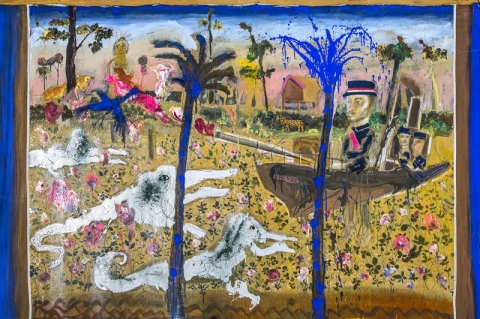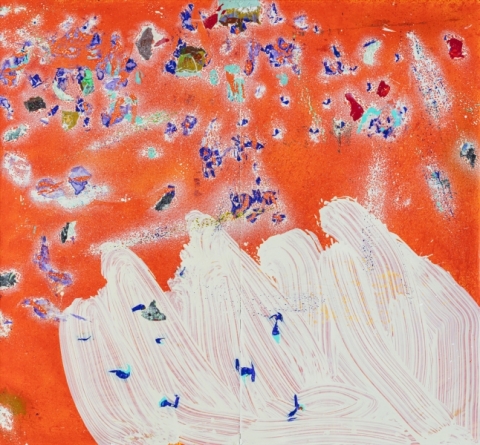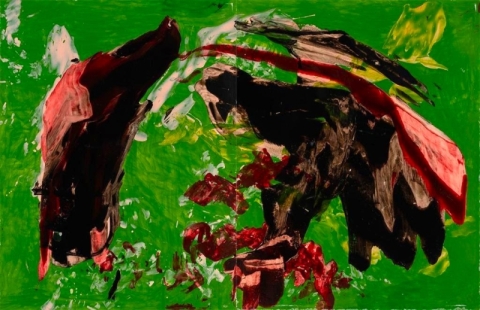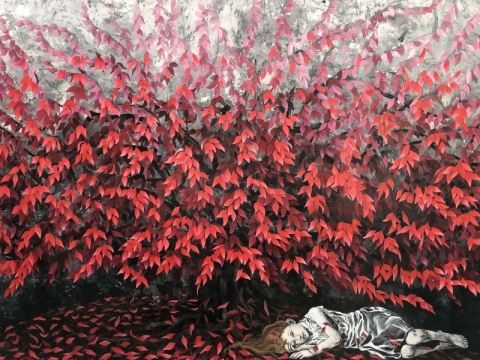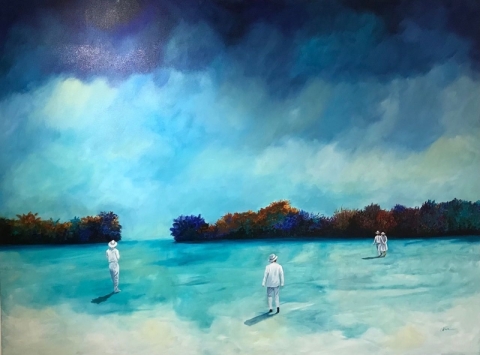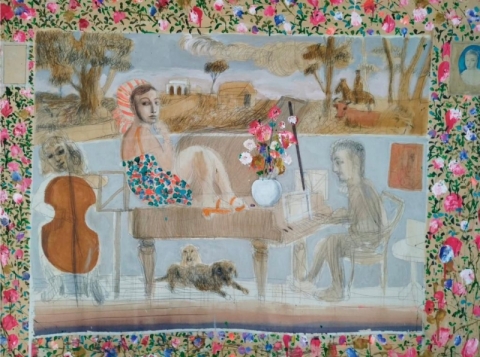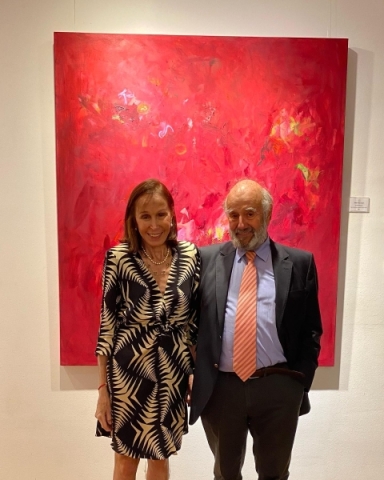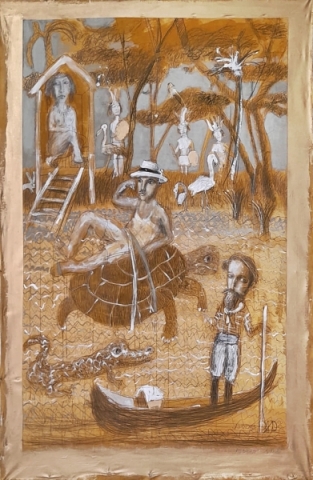Arts
THE MAGIC OF ARGENTINIAN ART
TANGO OF COLORS, TAPESTRY OF DIVERSITY

Lucas Pertile - "Orilla" (Source: Ina von Ber)
USPA NEWS -
Argentine artists have shaped the global modern art scene through their innovative approaches, diverse styles, and provocative works that challenge the status quo and push the boundaries of artistic expression. Modern art in Argentina can be traced back to the early 1920s and 1930s when a group of avant-garde artists began to break away from traditional artistic convention and focused on new approaches. Artists such as Emilio Pettoruti and Xul Solar begun incorporating elements of Cubism, Surrealism, and Expressionism into their work and moved into the forefront of this movement, while such artists as Tomás Maldonado and Gyula Kosice started exploring the use of geometric shapes and abstract forms in their work during the 1940s and 1950s marking the emergence of the Concrete Art movement in Argentina. This period also saw the rise of the Informalist movement, which emphasized spontaneity and improvisation in the artistic process.
In the 1960s and 1970s, Argentine artists such as Luis Felipe Noé and Marta Minujín began to experiment with new forms of expression, incorporating political and social themes into their work. This period also saw the emergence of performance art and conceptual art in Argentina, with artists such as León Ferrari and Graciela Carnevale pushing the boundaries of traditional artistic practices.
Today, the modern art scene in Argentina continues to thrive, with a new generation of artist, one of them Eduardo Hoffman who is known for his remarkable use of color and texture in his paintings, for pushing the boundaries of artistic expression and exploring new forms of media, rich and vibrant tapestry that reflects the country's cultural diversity and artistic innovation. Hoffmann's unique style has garnered him much attention in the art world, and he has exhibited his work in galleries both in Argentina and abroad. Hoffmann’s art exudes a sense of energy, emotion, and imagination, captivating the audience with its distinctive and thought-provoking aesthetic.
His work has been a standout among the exhibitions and his pieces have been praised for their emotion
Today, the modern art scene in Argentina continues to thrive, with a new generation of artist, one of them Eduardo Hoffman who is known for his remarkable use of color and texture in his paintings, for pushing the boundaries of artistic expression and exploring new forms of media, rich and vibrant tapestry that reflects the country's cultural diversity and artistic innovation. Hoffmann's unique style has garnered him much attention in the art world, and he has exhibited his work in galleries both in Argentina and abroad. Hoffmann’s art exudes a sense of energy, emotion, and imagination, captivating the audience with its distinctive and thought-provoking aesthetic.
His work has been a standout among the exhibitions and his pieces have been praised for their emotional depth and captivating visual impact.
His work has been a standout among the exhibitions and his pieces have been praised for their emotional depth and captivating visual impact.
One gallery that showcases Hoffmann's art is Galeria Isabel Anchorena, a prestigious art space in Buenos Aires which has a reputation of featuring some of the most talented contemporary artists. The gallery is a dynamic force in the Argentinian art scene, a hub for talent and inspiration.
Some of Galeria Isabel Anchorena’s eye catching paintings are works of prominent Argentinian painter Miguel D’Arienzo and Eugenio Cuttica, artists who share Hoffmann's passion for abstract expressionism. Similar to Hoffmann, Cuttica's paintings also exude a sense of movement and vitality, his use of color and form creates a mesmerizing experience for the viewer. His work focuses on beauty as a concept, not as an intellectual construct, something that is simply happening, appealing to the idea that the artist is a vehicle of energy that passes by, a foreigner. Throughout his strong conviction of highlighting another invisible reality, Eugenio Cuttica’s masterpieces form a connection with its spectators, a connection that enables the viewers to rediscover a state of contemplation.
Hoffmann’s, D'Arlenzo's and Cuttica's works are characterized by a contemporary and abstract artistic style. The artists often use bold and vibrant colors, dynamic shapes, and expressive brushwork to create powerful and visually arresting compositions. Their works may also incorporate elements of surrealism and symbolism, inviting viewers to explore and interpret the deeper layers of meaning within each piece.
The gallery itself continues to inspire and excite art enthusiasts around the world and can be considered a focal point for South American artists. More information about South American Argentinian Artist s can be found Ambassadorial Roundtable /Cultural Diplomacy.
The gallery itself continues to inspire and excite art enthusiasts around the world and can be considered a focal point for South American artists. More information about South American Argentinian Artist s can be found Ambassadorial Roundtable /Cultural Diplomacy.
more information: https://www.ambassadorialroundtable.org
Liability for this article lies with the author, who also holds the copyright. Editorial content from USPA may be quoted on other websites as long as the quote comprises no more than 5% of the entire text, is marked as such and the source is named (via hyperlink).

